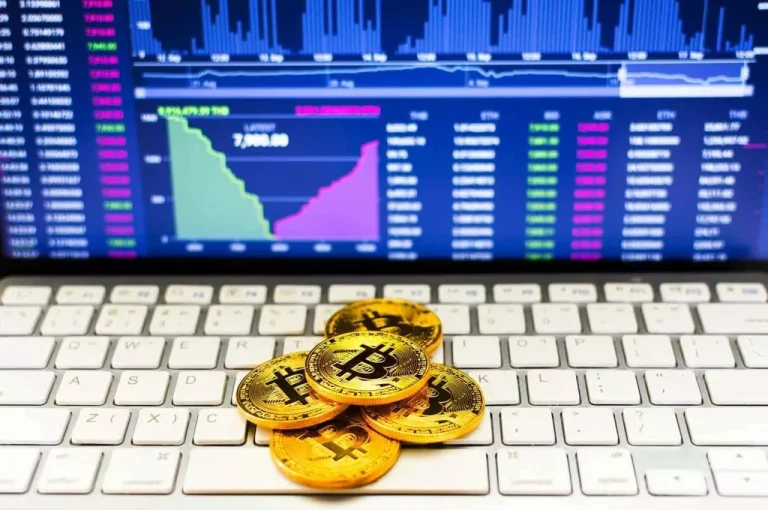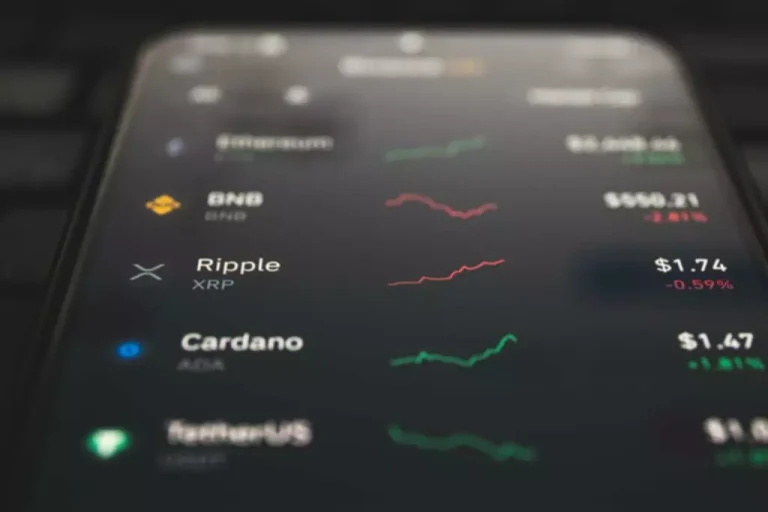Change Traded By-product Definition, Varieties, Advantages, & Dangers
Derivatives have turn into increasingly in style in latest a long time, with the whole worth of derivatives excellent was estimated at $610 trillion at June 30, 2021. An options contract is just like a futures contract in that it’s an settlement between two events Exchange Traded Derivatives to purchase or sell an asset at a predetermined future date for a specific worth. The key distinction between choices and futures is that with an possibility, the customer is not obliged to exercise their agreement to purchase or sell.
Common examples of derivatives include futures contracts, options contracts, and credit default swaps. Beyond these, there’s a huge amount of by-product contracts tailored to satisfy the needs of a diverse range of counterparties. In fact, as a end result of many derivatives are traded over-the-counter (OTC), they will in principle be infinitely customized. Another important good factor about exchange traded derivatives is excessive liquidity.
- These monetary securities are commonly used to entry certain markets and could also be traded to hedge towards threat.
- All kinds of small retail investors and large institutional buyers use exchange-traded derivatives to hedge the worth of portfolios and to invest on worth actions.
- An import-export organization might use foreign money futures to lock in forex rates for impending transactions.
- The proprietor of this website could also be compensated in exchange for featured placement of certain sponsored services and products, or your clicking on hyperlinks posted on this web site.
- If interest rates rise to 8%, then QRS must pay XYZ the 1 percentage-point difference between the two swap charges.
- Compared to OTC derivatives, ETDs have certain benefits, like the uniformity of rules and eliminating default risks.
The key distinction between stock and index ETDs is that you can physically obtain the stock derivatives, that means you might get them in cash. For instance, if you have a TCS inventory spinoff, you would get paid with TCS shares. However, with index derivatives, like the BSE index, there’s no physical delivery concerned. ETDs are transactions between events by way of an middleman quite than between them directly. Because each events are contractually obligated to the middleman, there are fewer probabilities of default. ETDs also promote worth discovery by providing a mechanism for market participants to specific their views on the future price of the underlying asset.
This is as a outcome of they will merely sell off their present place to a willing celebration available in the market and purchase an offset place, that too at a revised worth. Some generally traded index derivatives embrace well-known ones like Nifty 50, Sensex, Nikkei, Nasdaq, S&P 500, and extra https://www.xcritical.in/. In the United States, ETDs are regulated by the Securities and Exchange Commission (SEC). The SEC is liable for ensuring that ETDs are traded in a good and orderly method, and that market participants are provided with adequate disclosure and transparency.
Bond Etds
Swaps contracts are a sort of ETD that involve the change of money flows between two events, primarily based on the value movements of an underlying asset. ETDs are extensively utilized by buyers, merchants, and corporations to hedge in opposition to price actions, speculate on future value modifications, and arbitrage worth discrepancies between totally different markets. All sorts of small retail traders and enormous institutional investors use exchange-traded derivatives to hedge the worth of portfolios and to invest on value movements.

Unlike over-the-counter derivatives, these contracts promote transparency by offering market-based pricing info. Furthermore, it increases liquidity and reduces flexibility and probabilities of negotiation. When it involves change traded derivatives, shares are the most common underlying belongings.
Cftc Rules
Financial futures are derivatives primarily based on treasuries, indexes, currencies, and more. They’re usually utilized by monetary institutions to hedge lengthy positions held within the underlying safety. Individual contracts could be a dimension that’s less daunting for the small investor. For occasion, an investor with restricted capital may consider mini options (10 shares) on high-priced stocks versus standard choices (100 shares).

Derivatives can be utilized to both mitigate danger (hedging) or assume risk with the expectation of commensurate reward (speculation). Derivatives can transfer threat (and the accompanying rewards) from the risk-averse to the risk seekers. Over-The-Counter (OTC) choices are tradable privately between individuals and have flexible phrases and situations. They don’t have any intermediaries and usually are not subject to market rules.
Benefits Of Exchange-traded Choices
Imagine that Company XYZ borrows $1,000,000 and pays a variable interest rate on the mortgage that is presently 6%. XYZ may be concerned about rising interest rates that can increase the costs of this loan or encounter a lender that is reluctant to increase extra credit while the corporate has this variable-rate danger. Counterparty dangers are a type of credit risk in that the events may not be ready to reside as much as the obligations outlined within the contract.
This threat could be mitigated by buying and selling ETDs on liquid markets and by fastidiously managing exposure to the underlying asset. Another defining characteristic of exchange-traded derivatives is their mark-to-market feature. Mark to market means gains and losses on each spinoff contract are calculated every day. If rates of interest fall in order that the variable price on the unique loan is now 5%, Company XYZ should pay Company QRS the two percentage-point distinction on the mortgage. If interest rates rise to 8%, then QRS would have to pay XYZ the 1 percentage-point distinction between the two swap rates. Regardless of how rates of interest change, the swap has achieved XYZ’s authentic objective of turning a variable-rate mortgage right into a fixed-rate mortgage.
By trading ETDs, market members can provide data to the market about their expectations for future value movements, which might help to ascertain a extra environment friendly and correct market value. An exchange-traded derivative (ETD) is a monetary instrument that derives its worth from an underlying asset, similar to a commodity, a forex, or a stock index. If you’re beginning your funding journey or are connected with the monetary markets, you have to have heard about ‘Derivative Trading’. As it is thought of an efficient profit-making software, traders and merchants allocate a portion of their capital in course of derivatives to make sure they’re worthwhile in nearly each market scenario. The nature of the derivative market is such that it involves massive quantities of money, making in depth studying concerning the time period an important side of your successful funding journey. The trade itself acts as the counterparty for each exchange-traded by-product transaction.
An Exchange Traded Derivative is a kind of financial contract whose value relies on an underlying asset, corresponding to a stock, commodity, or currency. These derivatives are traded on organized exchanges, with standardized terms and pricing. Options contracts are traded on organized exchanges and are used by buyers and corporations to handle price danger, speculate on future value changes, and generate earnings from premiums. Futures contracts are traded on organized exchanges and are utilized by buyers and companies to handle price danger and achieve exposure to commodities, currencies, and different belongings. Derivatives are securities whose worth depends on or derived from an underlying asset. For instance, an oil futures contract is a kind of by-product whose worth is predicated available on the market worth of oil.
Exchange-traded derivatives have turn into increasingly in style because of the advantages they’ve over over-the-counter (OTC) derivatives. These advantages include standardization, liquidity, and elimination of default danger. In phrases of timing your proper to buy or promote, it depends on the “fashion” of the option. An American choice permits holders to train the choice rights at any time earlier than and including the day of expiration.
Exchange buying and selling contains inventory options, forex futures, choices and swaps, and index futures. Because of this, merchants are simply capable of reverse their positions by connecting with their counterparts and making opposite bets against or promoting their stakes. Due to the liquid market, these parties can be simply discovered and traded, resulting within the stake being offered without any significant loss. ETDs are also subject to market threat, which is the risk that the underlying asset will expertise value actions which would possibly be opposed to the market participant’s place.

Our team of reviewers are established professionals with decades of experience in areas of private finance and maintain many superior levels and certifications. At Finance Strategists, we associate with financial consultants to ensure the accuracy of our financial content material. By doing so, arbitrageurs assist to advertise price efficiency and cut back market volatility. If you want to put money into derivatives, you have to first understand their basic definition and meaning.
What Factors Influence The Pricing Of Exchange-traded Derivatives?
Exchange Traded Derivatives are standardised monetary contracts which might be traded on stock exchanges in a regulated method. Market regulators just like the Securities and Exchange Board of India (SEBI) draft rules for them. In comparability to OTC derivatives, ETDs have a number of advantages, like uniform guidelines and no default risk.
A spinoff is a complex type of economic security that’s set between two or extra events. Traders use derivatives to entry particular markets and trade different property. The most common underlying belongings for derivatives are shares, bonds, commodities, currencies, rates of interest, and market indexes.
It successfully becomes the vendor for each buyer, and the customer for each vendor. This eliminates the danger of the counterparty to the spinoff transaction defaulting on its obligations. Exchange-traded choices contracts are listed on exchanges similar to the Cboe Options Exchange.
In distinction, OTC derivatives contracts are not standardized and may be custom-made per the parties’ necessities. To sum it up, trade traded derivatives contracts include a lot of benefits that may help you make worthwhile trades. However, before taking any determination, it is crucial for you to determine which sector/sectors you plan on investing in and assess their current market developments. Real property change traded by-product contracts permit you to commerce in this sector with out proudly owning any physical investments.
Why You Presumably Can Belief Finance Strategists
International merchants needed a system to account for the differing values of national currencies. She has diversified and rich experience in private finance for greater than 5 years. Her earlier associations have been with asset management firms and investment advising firms. She brings in monetary markets subject matter experience to the group and create simple going investment content for the readers. Some indices on which buyers usually favor to purchase derivatives contracts are – S&P 500, Nifty 50, Sensex, Nasdaq and Nikkei. These investment vehicles are regulated by the Securities and Exchange Board of India (SEBI) and you should buy them on the exchanges.

